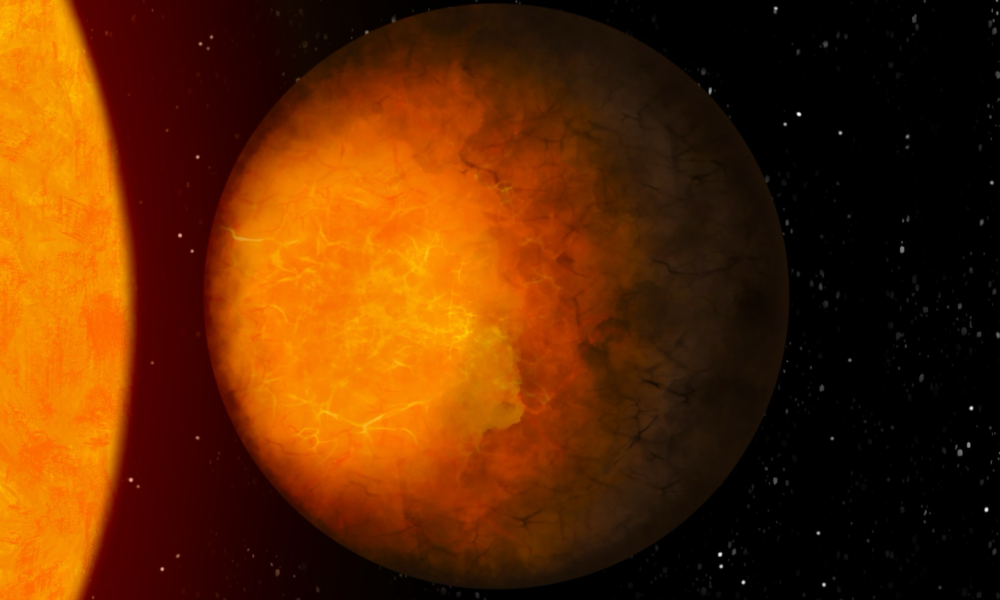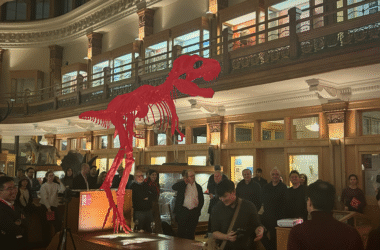One side of these planets sits at temperatures hot enough not only to melt, but to vaporize their solid rocky surface, creating oceans of molten lava and an atmosphere of vaporized rock. On the other side, the cold is unrelenting—temperatures reach well below -200 degrees Celsius, allowing its surface to remain solid. These extremes are among some of the strange features of lava planets.
On Sept. 19, at the third Physics Society Colloquium of the 2025-2026 academic year, Nicolas B. Cowan, associate professor of Physics and Earth & Planetary Sciences at McGill, gave a lecture on the physics of lava planets. Lava planets are a kind of exoplanet—a planet outside of our solar system—that have permanent oceans of liquid hot magma raging at the surface. Cowan began by describing just how hot lava planets get—somewhere around 2,700 degrees Celsius, or 3,000 degrees kelvin.
“To put that in perspective, 3,000 kelvin is actually the median surface temperature of stars in the galaxy,” Cowan said. “That’s like your run-of-the-mill average star, [which] is a mid-M dwarf star, and it’s got a surface temperature of 3,000 kelvin, so the surface of this planet is actually that temperature. It’s pretty hot.”
As with any planet orbiting a star, lava planets have day and night sides, with the former directly facing the star and the latter facing the cold, dark void of space. They orbit so closely to their star that they can complete a whole revolution in a mere few hours—something which Earth takes 365 days to achieve.
Similarly to our moon, lava planets are tidally locked, meaning the same side is always facing its star: It is on this day side where magma oceans rage.
Cowan noted that magma oceans have been a topic of discussion long before they were discovered on existing planets.
“Magma oceans are not some [newly] made up thing. People talked about magma oceans before lava planets, and that’s because we think that all rocky worlds, including the Earth, the moon, Mercury, whatever, all the planets start off molten.”
Rocky planets go through a period of being molten as a result of the energy dissipated when they first form. As layers of space dust and particulate matter come together, the pressure increases, thus increasing temperature and creating a molten state. The difference between planets like Earth and planets like K2-141B—a known lava planet—is that the latter’s molten lava ocean is a permanent fixture. On planets like Earth, the lava ocean eventually solidifies.
Cowan then went on to describe the atmosphere of lava planets. In every atmosphere—whether it surrounds Earth or K2-141B—winds are caused by air moving from areas of high to low pressure. Temperature and pressure are directly proportional; thus, the stark temperature difference between the day and night sides of lava planets results in abnormally fast winds emerging from the day side, in some cases travelling 1.75 kilometres per second—or five times the speed of sound.
Coming down from the atmosphere, Cowan then discussed lava planets’ interior. Rock—which makes up a lava planet’s outer layer—is composed of a variety of chemical substances, the most abundant of which is silicon dioxide. Because of its complex chemical make-up, the rocky surface does not melt and solidify uniformly. The section between the approximately 100-kilometre-deep magma ocean and the planet’s solid iron core is in a state scientifically known as ‘mush’—a mixture of solid and liquid phases.
Cowan concluded his lecture by explaining why lava planets end up orbiting so closely to their star. These planets could not have formed in such intense heat, as the temperatures in these close orbits would have vaporized any rocky material, thereby preventing it from solidifying and forming a planet. Cowan instead proposed that lava planets obtained their orbit by way of high eccentricity migration—a process by which a space body’s orbit shrinks and circularizes because of the effects of a nearby space body. In other words, these planets likely formed farther away and moved inward over time.
Ultimately, the study of lava planets improves our understanding of the universe and the processes of planet formation and development, both within and beyond our solar system.






